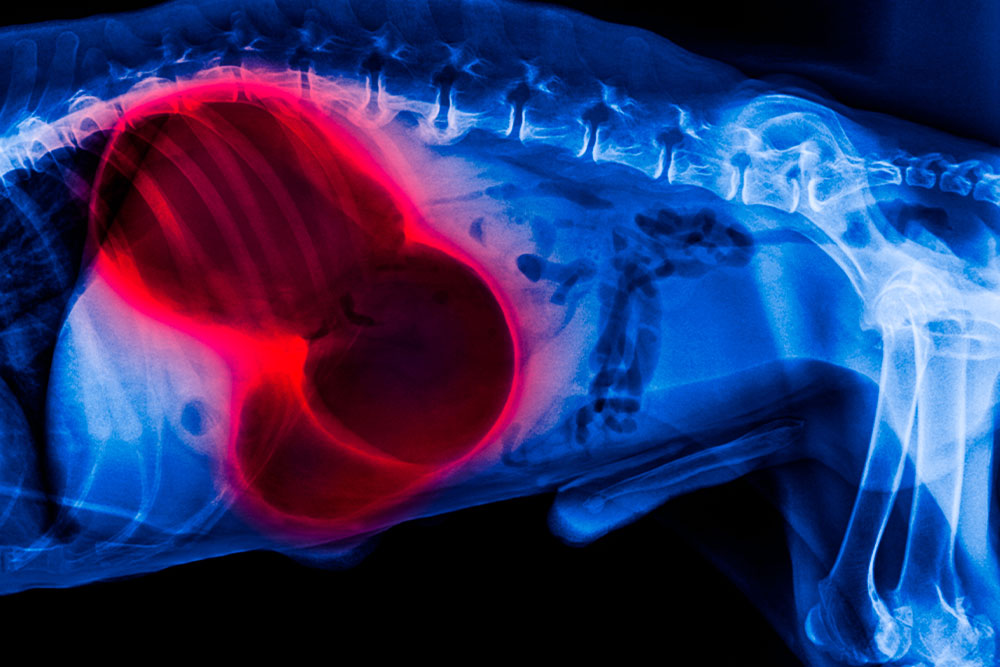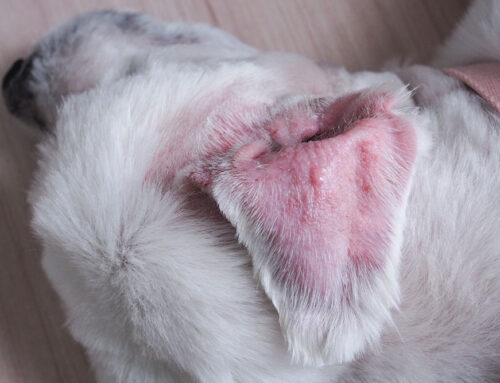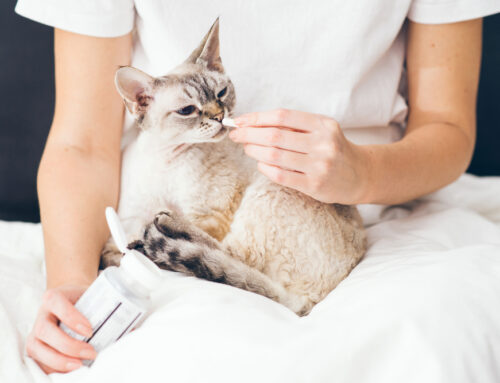The Hidden Danger of GDV: What Every Dog Owner Should Know
At Valley Center Veterinary Clinic, we understand that when something feels off with your dog, your instincts kick in fast. Maybe they’re pacing, drooling, or retching without producing anything. Maybe their belly looks swollen, and they won’t settle. If you’re reading this in real time, stop here and contact us immediately or go to the nearest 24/7 veterinary emergency room. When it comes to bloat- medically known as gastric dilatation-volvulus (GDV)- speed can save lives.
This condition can escalate in a matter of hours, and while it’s most common in large-breed dogs, it’s something every dog owner should be aware of.
What Is GDV, and Why Is It So Serious?
Bloat may start with the stomach simply filling with gas or food, but when it progresses to GDV, the stomach twists on itself. This rotation cuts off blood flow to vital organs, trapping gas inside and leading to tissue death, shock, and even cardiac arrest.
There’s no waiting it out. Once the stomach flips, immediate emergency care is the only path to survival.
What Causes GDV in Dogs?
The truth is, no one knows the exact cause- but we do know what increases the risk.
Certain breeds are far more likely to experience bloat, especially those with deep chests and narrow waists. Great Danes, Weimaraners, Dobermans, and German Shepherds top the list. If you’re curious about your dog’s unique risks, this breed-specific health guide is a helpful resource.
Beyond genetics, eating habits can play a big role. Dogs who eat quickly, consume large meals in one sitting, or exercise heavily right after eating are more prone to GDV. Elevated food bowls- once thought to help- may actually increase risk in some dogs. And stress is no small factor either. High-anxiety environments can affect digestion and make bloat more likely.
Early Signs of Trouble
GDV often begins with subtle changes. Your dog may seem restless, pace around the house, or try unsuccessfully to vomit. As the stomach starts to twist, symptoms escalate quickly.
Look for:
- A firm, distended abdomen
- Retching without producing vomit
- Rapid breathing or panting
- Pale gums
- Weakness, collapse, or signs of pain when touched
If you see any of these, it’s an emergency. Knowing the signs in advance can help you act fast. Review this emergency guide to feel more prepared.
How We Diagnose and Treat GDV
At Valley Center Veterinary Clinic, we move fast the moment a dog with suspected bloat walks through our doors. Diagnosis starts with a physical exam, followed by x-rays to confirm stomach rotation. Blood tests help us assess organ function and look for shock.
If GDV is diagnosed, immediate surgery is needed. The goals are to untwist the stomach, remove any damaged tissue, and perform a gastropexy- suturing the stomach to the abdominal wall to prevent future twisting.
Learn more about what to expect from our surgical care, including options like laparoscopic gastropexy, a minimally invasive preventive surgery that’s especially valuable for high-risk breeds.
Aftercare and Recovery
Recovery doesn’t end with surgery. Post-operative care includes:
- IV fluids and pain relief
- ECG monitoring for heart rhythm changes
- Nutritional support to reintroduce food safely
- Antibiotics to ward off infection
- Cold laser therapy to reduce inflammation and aid healing
Most dogs remain hospitalized for monitoring for several days. Once home, you’ll continue with a slow, structured recovery plan. Our team is with you every step of the way.
Life After GDV: What Changes?
If your dog has had GDV, it’s normal to feel anxious about it happening again. While gastropexy greatly reduces the risk of recurrence, it doesn’t eliminate it completely. Prevention becomes a lifestyle:
- Feed smaller, more frequent meals
- Avoid exercise an hour before and after eating
- Use slow-feeder bowls or puzzle toys
- Minimize stress around mealtime
- Keep your vet updated on any new behaviors
We’re always here to discuss what’s working and adjust your dog’s wellness plan accordingly.
How to Lower the Risk of GDV
Preventive steps can make a real difference- especially if your dog is in a higher-risk group.
If you’re just getting started, this resource from the American College of Veterinary Surgeons offers an excellent overview of GDV in dogs, and what’s on the horizon in terms of prevention and research.
Some pet owners also choose elective gastropexy at the time of spay or neuter. We’re happy to talk through this option with you and help you weigh the risks and benefits based on your dog’s breed and history.
FAQs About Bloat in Dogs
Can bloat happen more than once?
Yes, though surgery significantly reduces the risk.
Is GDV only a concern for large dogs?
It’s most common in large, deep-chested breeds- but it’s not impossible in smaller dogs.
How long do I have to get help if I notice symptoms?
GDV can progress rapidly. You may only have a few hours. Never wait and see.
Can it be prevented completely?
Not completely, but with a combination of feeding strategies, environmental management, and possibly surgery, you can lower the odds substantially.
We’re Ready When You Need Us
There’s no such thing as overreacting when it comes to bloat. GDV is one of the most urgent conditions we see in dogs, and acting quickly gives your pet the best chance at a full recovery.
Whether you want to discuss preventive options, learn more about your dog’s breed-specific risk, or schedule a visit, we’re here to help. At Valley Center Veterinary Clinic, your dog’s health is our priority- today, tomorrow, and in every emergency.








Leave A Comment